Soil as a buffer
Without the buffering ability of the surface soil, nutrients would immediately be washed away with the first substantial rainfall. This is an important aspect in water management on account of water quality.
|
Thema |
Zoetwatervoorziening, Delta facts, English versions |
|
Tags |
|
|
Downloads |
- INTRODUCTION
- RELATED TOPICS AND DELTA FACTS
- STRATEGY: HOLD, STORE, DISCHARGE
- SCHEMATIC
- PERFORMANCE
- COSTS AND BENEFITS
- TECHNICAL SPECIFICATIONS
- GOVERNANCE
- FIELD EXPERIENCE (NATIONAL AND INTERNATIONA L)
- KNOWLEDGE GAPS
- OVERVIEW CURRENT PROJECTS AND RESEARCH
Introduction
Due to soil preparation and modification, decreased quality in organic compounds and increased water discharge, the natural buffer capacity of the soil has decreased demonstrably in many locations in the Netherlands in the past decennia. Changes in climate have resulted in more frequent periods of extreme drought and periods of extreme precipitation. Optimal utilization of the earth’s buffer capacity is becoming increasingly important, particularly in the high sandy soils. For water management, the earth is particularly important as a buffer for precipitation surpluses and shortages.
Soil drainage and groundwater/surface water are also mentioned in this regard in the National Water Plan 2009-2015, in the explanation on ‘trio hold-store-discharge:
'Upstream retention of surplus water in the soil and groundwater wherever possible’ (National Water Plan). Without the buffering ability of the surface soil, nutrients would immediately be washed away with the first substantial rainfall. This is an important aspect in water management on account of water quality.
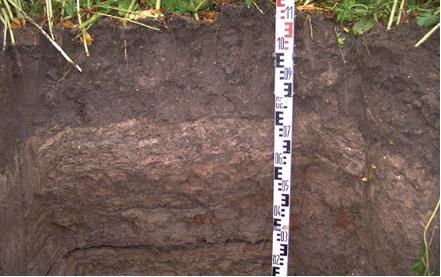
Related topics and Delta Facts
Keywords: water shortages and fresh water supply, water quality, drought damage,
Delta facts: Soil moisture-based irrigation, drought controls functions, effects of climate change on aggriculture, effects of climate change on nature
Strategy: hold, store, discharge
Ground surface as buffer for water - a strategy of holding water in the soil as a buffer between the atmosphere – precipitation and evaporation – and the surface water.
A suitable ground surface converts a temporary precipitation surplus into a stored water supply to bridge a period of drought. The buffering action of the ground surface thereby aids in reducing the required water capacity system, both for water drainage and for water supply.
In addition, optimal utilization of the buffering capacity of the ground surface results in crop production that is less dependent on external supply and drainage of water, nutrients and pesticides.
Schematic
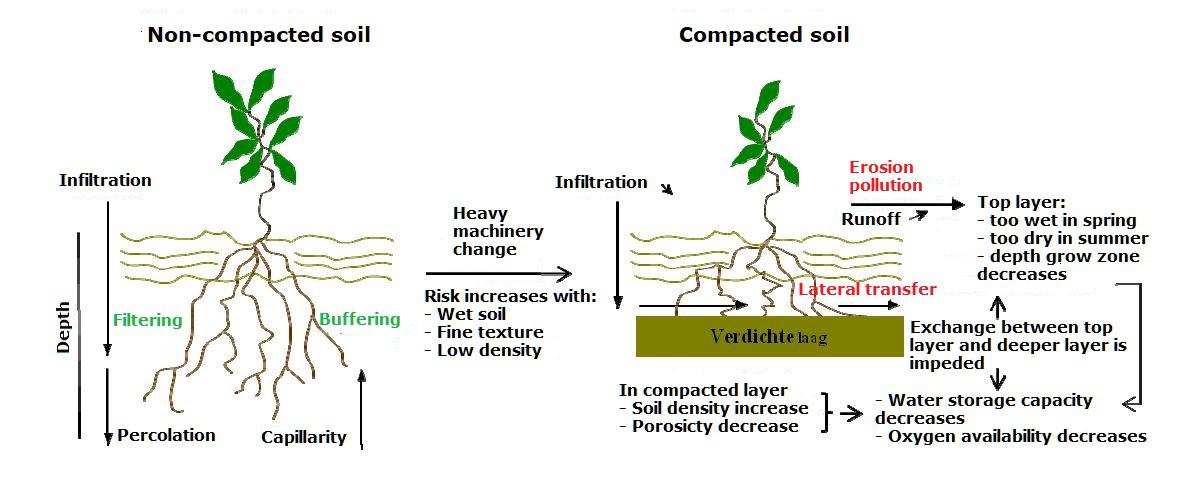
Figure 1. Relation between the ground surface (structure) and water management. Source: ST OWA 2011
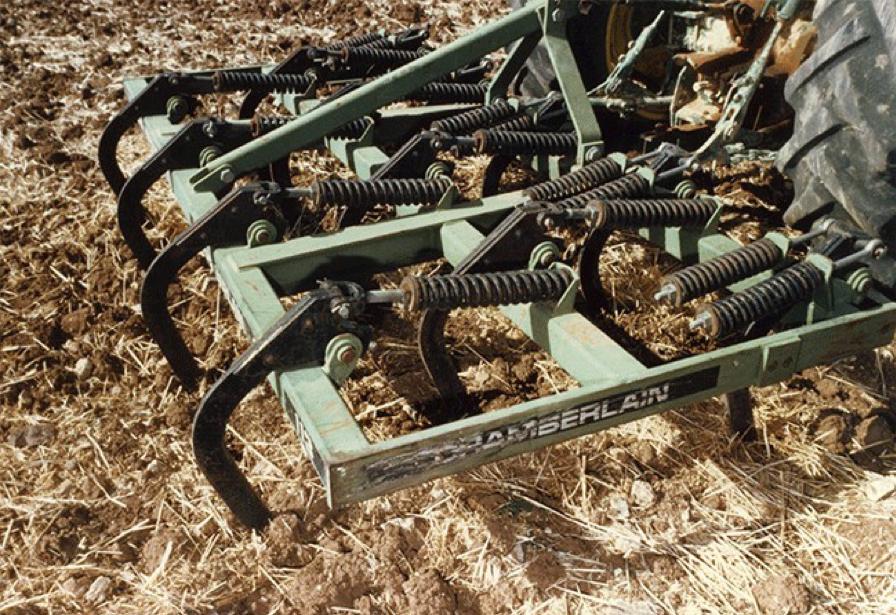
Figure 2. Reduced buffering capacity of the ground surface due to compaction. Source: Reubens 2010
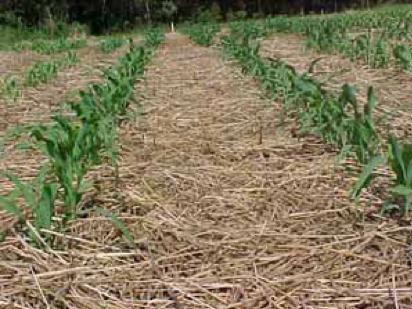
- Figure 3. Non-retaining soil modification
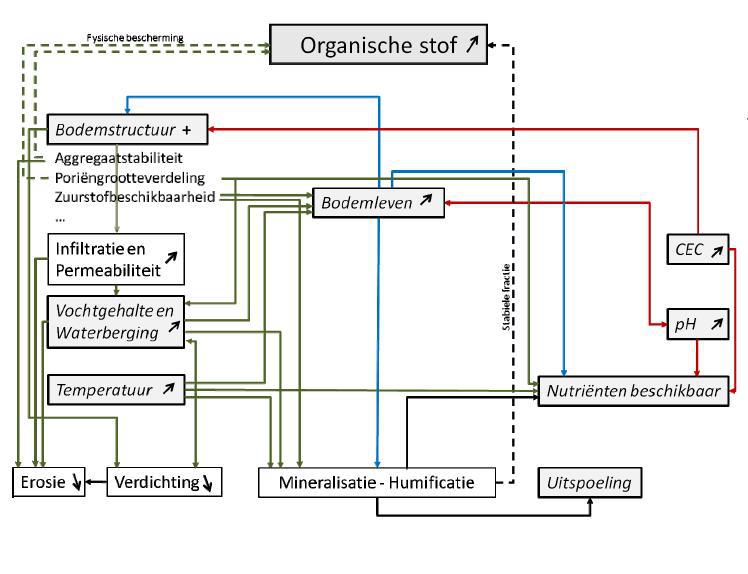
Figure 4. Schematic diagram overview of soil reactions related to Organic Substance (OS); blue lines : effect of soil life; green arrows : physical soil effects ; red lines : chemical soil effects ; black lines : soil process effects. Dotted lines : interaction with OS. Source : Reubens 2011
Performance
The soil eco-system is an important part of our living environment. It is home to critical processes that are linked to our total living environment such as air, groundwater etc. Important processes are:
- the fragmentation of plant remnants and mineralization of organic substances;
- the self-cleaning ability of soil, including the decomposition of organic pollution and innate environmental substances;
- immobilizing pollution;
- retention and transportation of water. This service is important to plant growth as well as small and large-scale water management;
- temporary storage of heat and cold, of increasing importance for climate control in buildings;
- buffering and influencing climate. This includes buffering of moisture and air temperature, filtering the air through vegetation and retaining and converting greenhouse gasses.
Source: https://soilpedia.nl/ecosysteemdiensten-duurzaam-benutten-van-bodemfuncties
Soil as a buffer. Suitable soil converts a temporary precipitation surplus into moisture storage in the ground that can be used to bridge a period of rainfall shortage. The buffering capacity of the soil thereby reduces the required water capacity for water drainage and water supply. The reduction in surface drainage is favourable for the water quality due to decreased erosion and surface nutrient runoff and crop protection products.
From a water management perspective, the soil is of particular importance where it concerns buffering precipitation surpluses and shortages. In this respect, soil is also mentioned in the National Water Plan 2009 – 2015 in the explanation on ‘trio hold-store-discharge’: ‘ Upstream retention of surplus water where ever possible, in ground water and in surface water’ (National Water Plan).
The soil capacity for water retention is largely determined by the pore-size distribution in soil (see box 1). For the farmer, the soil is both a water buffer and a nutrient buffer for the crops. Without the buffering capacity of the soil, nutrients would immediately be washed away in the first substantial rain shower. This aspect is also of importance to the water manager given the relevant water quality. Figure 1 provides an overview of the relation between soil and water management.
For Dutch agriculture, the length of the growing season is a determining factor in crop yield. In order to sow early in spring or to harvest late in autumn, the soil must have sufficient load capacity to allow heavy vehicles, machines and/or animals to pass without creating permanent damage to the soil.
This was an important argument for the construction of deep drainage and rapid discharge systems at the time of land consolidation. Meanwhile, this has shown to cause dehydration - particularly in natural (sanctuary) areas – and it causes undesirable high peak discharges, as becomes apparent from the aforementioned trio.
Increasing the level of groundwater and/or the storage of moisture in the ground also increases the possibility of compaction. In the Netherlands, the concern with regard to increased compaction has a higher priority rating than water retention where it concerns considering the various alternatives to the usual methods of soil modification. Increased compaction also results in an increased runoff and subsequent pollution of surface water. Therefore, compaction has also become an issue for the water manager (figure 2). The same applies to the reduction of erosion in sloping areas.
|
Box 1. Effects of soil compaction on water management Soil compaction has a number of consequences in water and gas management, which subsequently have effects on crop growth and water discharge on arable land. Water management in soil is substantially influenced by pore-size distribution:
Soil compaction is accompanied by a decrease in the number of macropores and an increase in number of micropores. Compaction has consequences for water transport, in both the vertical (discharge) and the horizontal (runoff) direction. Permeability, water transport, and moisture retaining ability all have consequences for the removal of nutrients. Rapid transport of nutrients below the root zone (vertical direction) to surface water (horizontal direction) results in a more substantial nutrient loss. Because the large pores are pressed and flattened, compaction can limit the rapid discharge. At the same time, compaction will stimulate the horizontal transport and the probability of runoff. Naturally, this applies to all nutrients (including nitrate and phosphate) and other substances that are transported by water. |
Bron: Zwart et al., 2011
Zero-tillage soil preparation is an agricultural technique used to avoid intensive tilling or mixing of soil. The result is that more crop residues remain behind in the soil surface and the soil benefits as this helps to protect the soil from pan-layers and erosion during wet periods and it protects against dehydration in dry periods. The decreased intensity of soil modification promotes life in the soil and it reduces the risk of soil compaction.
In contrast with tilling, the soil is not turned over but loosened in zero-tillage. The blades that are pulled through the soil tear and crumble the soil without displacing the soil. Direct sowing is also a form of zero-tillage soil preparation. With the exception of a small trench that is made for sowing and the churning of soil due to harvesting tuberous plants, the soil is largely left undisturbed. This results in more crop residues remaining in the surface soil, which helps to protect the soil from erosion, silting and pan-effect). Minimal preparatory soil modification leaves the soil structure consisting of live roots and soil fauna mostly intact.
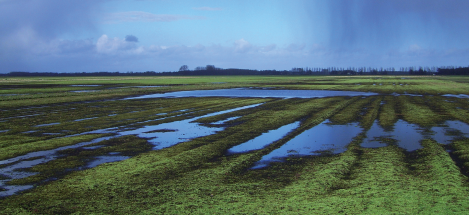
Even though conventional ploughing is an efficient short-term solution for bothersome layers of compaction, ploughing itself often is part of the problem. After all, using the furrow as a driving guide and driving with one wheel ‘in the furrow’ substantially increases the local pressure and the risk of compaction. In addition, the looser the soil is the deeper the possible compaction. This makes the soil very susceptible to new compaction after intensive preparation. Soil compaction in the construction furrow and in the layer beneath has consequences for surface water management and can mainly be detected in a reduced infiltration capacity (figure 5).
Organic substance has a favourable effect on the structure of the soil. Directly, by means of bonding mineral material through humus and indirectly, by means of increased micro-organisms and rooting. Because of humus, larger aggregates can be sustained in sandy soil and it improves the crumbling in clay soil. It increases the soil aeration in clay soil and results in less moisture damage to plants. In sandy soil, the effect of the organic substance content is meaningful in the moisture binding capacity of the soil. The moisture binding capacity is increased by 1-8 cm3 per gram of organic substance while the quantity of available pendulate water increases by 0-3 cm3. This means that less irrigation is required at a later stage, in quantity and in frequency. The soil susceptibility to wind and water erosion is reduced in sandy soil because the sand particles are held together by humus.
In zero-tillage soil preparation, more organic carbon accumulates in the topsoil while there is less organic carbon in the deeper layers of soil compared to conventional ploughing, where the organic residue is homogenously distributed through the soil. From an agricultural perspective, an increase of organic carbon in the topsoil is more desirable. This is the layer where carbon executes crucial functions such as aggregate forming, counteracting silting, pan-effect and erosion and making nutrients available (Figure 4). The majority of research indicates that organic carbon stores are positively influenced in the long-term if conventional tillage is replaced by zero-tillage soil preparation (Reubens et al., 2010). Different studies have shown that the microbiological biomass in the top layer of soil increases in size with zero-tillage soil preparation (Van Groeningen et al., 2010).
Larger organisms are very sensitive to soil preparation. Every form of mechanized disturbance has a direct effect on soil fauna by physically killing, maiming and exposing the fauna to predation during execution (of soil preparation). In addition, the preparation also has an indirect impact namely the habitat destruction of soil fauna. Earthworms are more bountiful in non-tillage preparation thanks to the presence of a protective layer of plant residues, more soil moisture, higher food supply and less destruction of passages.
(Ecoworm: http://www.biw.kuleuven.be/lbh/lbnl/ecoworm/index.htm)
Costs and benefits
The buffering capability of the soil is an eco-system service and the benefits of this service are generally only appreciated once the service is limited or no longer available. An example of this is the effect that urbanization had on the peak discharge of rivers and creeks. The loss of the buffering capability of the soil then had to be compensated for by enlarging the discharge or storage capacity or by increasing by the height of dikes/levees. At this point, the high cost related to replacement (ecosystem) service comes into view for something that used to be free. The limited visibility of the benefits of the buffering capacity of the soil is further obscured by the amount of time it takes for changes to become noticeable. This applies to both improvements and deterioration. In an economic cost – benefit analysis, the long-term effects are not given the same consideration as short-term effects.
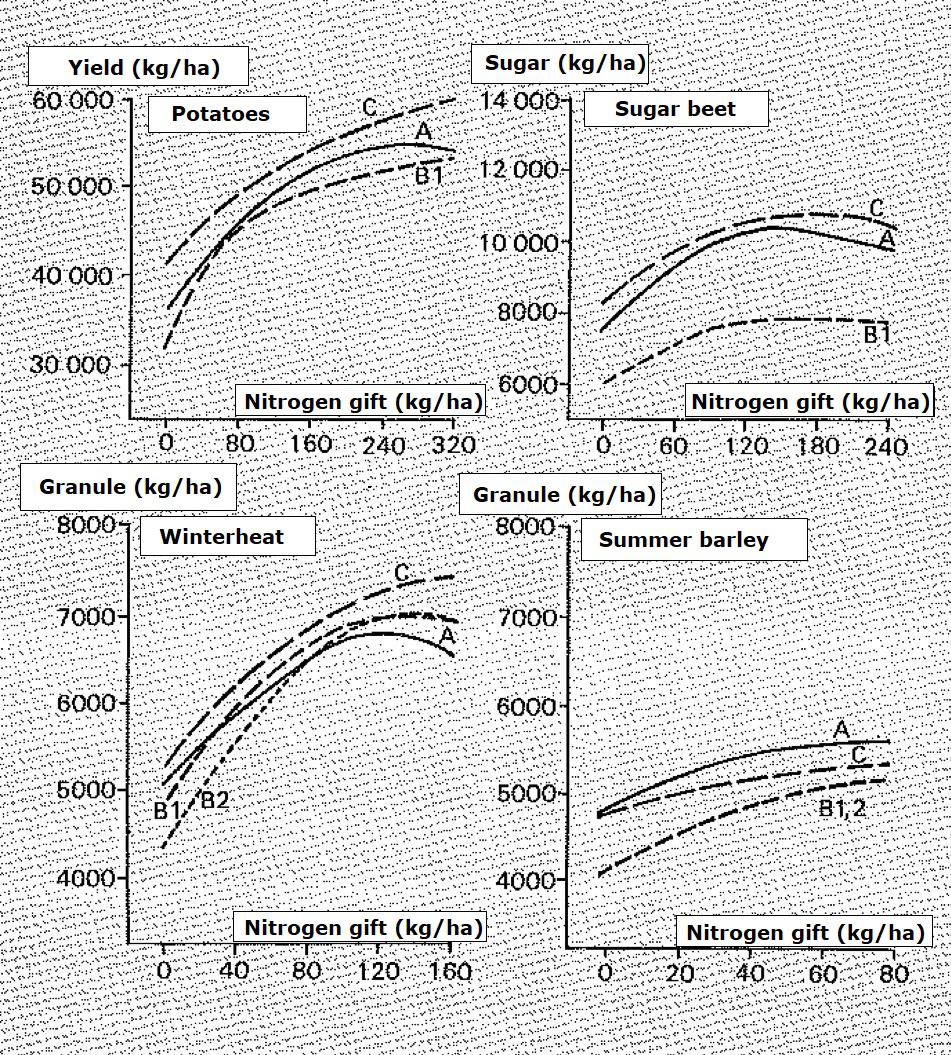
Figure 6. Average yield of three ground preparation systems on heavy sulphur (period 1972-1975). A: I intensive soil preparation, B: Minimal soil preparation, C: Limited soil preparation. Source: Schneider & Huinink 1990
In the chapter about soil modification (Schneider & Huinink 1990) in the classic Handboek Bodemkunde van Nederland (Locher & de Bakker 1990) [Textbook Soil Science of the Netherlands] it states that soil modification does not per definition result in increased yield: ‘ Foreign research in particular has shown that grain harvests on soil that is susceptible to saturation and/or to conditions of drought certainly need not yield a lower harvest, provided that the soil preparation consists of only sowing preparation’. In field trials under Dutch conditions, minimal soil preparation had the lowest yield at that time (figure 6). Due to the ever-increasing weight of machinery, the soil compaction has increased considerably during the past decennia, which could mean that this issue will probably have to be reviewed.
The costs of soil compaction are accompanied by:
- lower yield and quality
- extra energy for loosening and
- extra use of crop protection products
It is difficult to estimate the exact cost level as exact figures are not available. In a recent study into soil compaction in province Drenthe, the total damage for the potato cultivation in this province was estimated at € 3.4 million and for sugar beet it was estimated to be € 1,0 million per annum. The results of trials involving structural improvements have shown varying results on the yield effects and very little is known about other costs and expenses.
Recent research into the economy of zero-tillage soil preparation in Belgium has shown that:
- the crop yield is comparable to the crop yield from conventional soil preparation;
- energy use is lower in zero-tillage soil preparation;
- zero-tillage results in time savings;
- maintenance costs of machines is higher in conventional soil preparation.
Source: http://aow.kuleuven.be/geografie/gebruikersinstrument_nkg/niet-kerende_bodembewerking/index.html
Technical specifications
Preconditions for (better) knowledge application of measures related to soil structure improvement is quantifying the effects on location level (STOWA 2011). This is an explicit objective of the research 'Bijdrage bodembeheer aan watervasthoudend vermogen landschap' [Contribution of soil management to water retaining ability of the landscape]. This paper deals with up scaling and quantifying the effects of the above-mentioned management control measures of water storage on landscape scale by using remote sensing, GIS and Eco-hydraulic modelling.
(http://www.narcis.nl/research/RecordID/OND1340316/Language/nl)
Governance
Improvement of moisture storing capacity of the soil links up with the theme ‘self-sustainability’, which is becoming an increasingly more important concept within water management (STOWA, 2011).
Dutch authorities can award farmers and private land users with a compensation for supplying ‘blue services’: measures that contribute to sustainable water management, among other things for the storage and purification of water, and by combatting drought/dehydration. (http://www.blauweengroenediensten.nl/)
Agricultural entrepreneurs south of the connecting roads Sittard-Wehr en Sittard-Urmond can apply for subsidy if they take measures to prevent erosion. The Province of Limburg has made the ‘Regulation zero-tillage soil preparation South Limburg’ available for this purpose. Source: Province Limburg.
The water boards certainly have an interest where it concerns soil structure but because the quantitative effect per area is unclear as yet, there is little urgency on management level. It does seem like there is a role for the provincial authorities as area authorities. Provincial authorities could take the lead here by initiating incentive projects. Naturally, the agricultural sector has an explicit own responsibility. Source: STOWA, 2011.
In order to table the importance of the soil with water board management and get it on the agenda so that insight can be gained in relation to the knowledge and information required to reach good decisions and measures, better insight will have to be gained and available on the costs and benefits and on the roles and responsibilities of all parties concerned. Source: STOWA, 2012.
Om het belang van de bodem ook bij de waterschapsbesturen op de agenda te krijgen en om inzicht te krijgen in welke kennis en informatie nodig is om tot goede besluiten en maatregelen te komen, zal er beter zicht moeten komen op de kosten en baten en op de rollen en verantwoordelijkheden die ieder daarin heeft. Bron: STOWA, 2012.
Field experience (national and international)
Even though the National Water Plan 2009-2015 explicitly mentions the role of soil in the retention of water, there are relatively few projects focussed on soil in the Netherlands. In this connection it a remarkable fact that when the Dutch water managers and researchers talk about ‘water in the capillaries’, they are referring to the smallest water courses while the largest moisture stock is actually stored in the ‘capillaries’ of an unsaturated soil zone.
On a global scale, the annual available moisture storage is 60,000km3; one-and-a-half times as much as the annual river discharge of all the rivers together (Cosgrove & Rijsberman 2000 ). Extensive international literature is available on the measures directed at improved utilization of this moisture stored in the soil - the practical applications are mainly in the field of combatting drought and limiting erosion. These measures are generally referred to with the term 'water conservation'. This is also worth noting as in the Netherlands, the term water conservation mainly concerns erecting small weirs and the like. One relative exception is the Province Limburg. It is investigating the possibilities of water conservation in the top layer with the objective of reducing the need for irrigation. (Berkhuizen & de Boer 2010).
STOWA/SKB meeting 22 March 2011
An afternoon meeting took place on 22 March 2011 in Amersfoort, where STOWA invited representatives of the water boards, provincial authorities, agricultural organisations and others to brainstorm about the function of soil structure (improvement) on the regional water management and the role of water managers in this.
STOWA/SKB meeting 2 march 2012
Under the title ‘Climate adaptable water management’: what does the soil offer?'. On 2 March, an inspirational introduction meeting took place on this theme in Utrecht between representatives from the water and soil world. During this day, jointly organised by STOWA and SKB, information was exchanged about the theme, current active projects and proposed projects, joint attention was given to the research questions as yet unanswered. It was concluded that it was possible to use proper soil management and that it offered much perspective in relation to climate change. Further quantification is required though as the need for water supply and the need for water discharge could drop. There was insistence that measures to this effect had to be actively applied and anchored in policy. Opportunities were considered to be available in the Joint Agricultural Policy (GLB/nl).
Knowledge gaps
Even though much is known about possible soil structure improving measures that could be applied by agriculture, many of these measures are (not) yet applied in practice on a large scale. One reason for this is that daily practice sometimes does not allow for practical implementation of the existing knowledge. Yet more importantly, the advantages of applying soil structure improvement measurements are often not evident to the farmer. As long as it is not clear that the application of these measures result in yield increase or cost reduction (efficiency increase), there are hardly any incentives for the agricultural sector to apply these soil structure improvement measures and nothing will change in daily practice. Besides, some soil structure improvement measures could also have detrimental consequences.
For instance, where zero-tillage soil preparation is applied to prevent the destruction of soil structure, more weed problems could occur which would then in turn require more pesticide to be used, with the corresponding economic and environmentally hygienic consequences of this. A desktop study, commissioned by Province Drenthe [Eco-system services and soil management] and executed by Alterra, investigates measures to improve the biological soil quality and could possibly offer alternatives or solutions to such problems. Bron: STOWA, 2011.
Preconditions for (improved) implementation of measures related to soil structure improvement is quantifying the effects on area level. Better insight is required regarding the contribution of improved soil structure to the moisture storing capacity of soil to make the measure widely applicable.
Research questions from the report CLIMATE ADAPTIVE WATER MANAGEMENT: WHAT DOES THE SOIL OFFER? Introduction, knowledge questions and active and recently completed projects. (STOWA en SKB):
Plenary feedback during the STOWA/SKB mentioned below shows that the need is mainly for quantified water management effects of soil improvement measures. What does it actually yield in mm or in m3? It was also noticeable that the influence of the deeper soil layers is important. For instance, future research was suggested into the influence of troublesome layers and the possibilities of growing crops that grow deeper roots.
Aside from the intrinsic knowledge questions regarding content, there also proved to be much demand for a platform where knowledge could be shared. It was determined that there was much knowledge but that it is difficult to access or only available in limited form. As knowledge brokers, STOWA and SKB could fulfil an important role in disseminating and developing knowledge. However, the projects will mainly have to be initiated in the water boards, provinces, and ministries, knowledge institutes and in agriculture itself. Each will have to take its own responsibility and also make choices regarding their field of focus.
Plenary feedback during the STOWA/SKB mentioned below shows that the need is mainly for quantified water management effects of soil improvement measures. What does it actually yield in mm or in m3? It was also noticeable that the influence of the deeper soil layers is important. For instance, future research was suggested into the influence of troublesome layers and the possibilities of growing crops that grow deeper roots.
Aside from the intrinsic knowledge questions regarding content, there also proved to be much demand for a platform where knowledge could be shared. It was determined that there was much knowledge but that it is difficult to access or only available in limited form. As knowledge brokers, STOWA and SKB could fulfil an important role in disseminating and developing knowledge. However, the projects will mainly have to be initiated in the water boards, provinces, and ministries, knowledge institutes and in agriculture itself. Each will have to take its own responsibility and also make choices regarding their field of focus.
Inventory of knowledge questions at STOWA/SKB knowledge meeting 2 march 2012
From the forms that were submitted and from the plenary feedback, it was possible to formulate many research questions, resulting in the following structure:
- Technically oriented questions, regarding processes on the arable land (A) on the one hand while on the other hand, questions regarding the influence of these processes on the larger water system (B).
- Cost – Yield questions focussed on quantification of (societal) effects ensuing from the processes mentioned above and, on the other hand the financial translation on business level.
- Process method questions related to scalability and implementation of current projects in accepted practice, on the dissemination of knowledge and the transition from practice to policy.
- Organisational questions aimed at practical imbedding and responsible parties.
The majority of the questions were in relation to the technical aspects and the cost – yield. This link is to Appendix 2 on page 38 containing a summary of all questions formulated in the classification above.
Overview of currently active projects and research
| Research project | Research location |
| 1)Deeper roots, better utilization, fewer losses | |
| 2)Delta plan high sandy soils | Brabant |
| 3)BIOC HAR - Climate saving soils | |
| 4)Sub-Soil Compaction in Dutch Agricultural Soils and its effect on production and surface water quality | |
| 5)Lift and look under a grass sod more often | Vallei & Eem |
| 6)Alternative forms of sustainable soil use and water management by and for farmers | Noord-Holland |
| 7)Buffering farmers – Cooperating for better water availability from the soil | Bernheze (Noord- Brabant) |
| 8)32 projects from: Climate adaptive Water management: What does the soil offer? (Stowa) | various |
| 9)Healthy Sand | ROM3D |
| 10)SKB Showcases! | SKB |
| 11)Fertile cycle | Rijn en IJssel |
Links/documents of the projects:
- Deeper roots, better utilization, fewer losses
- Delta plan high sandy soils
- BIOC HAR Climate saving soils
- Sub-Soil Compaction in Dutch Agricultural Soils and its effect on production and surface water quality
- Lift and look under a grass sod more often
- Alternative forms of sustainable soil use and water management by and for farmers
- Buffering farmers – Cooperating for better water availability from the soil
- 32 projects from: Climate adaptive water management: What does the soil offer? (STOWA and SKB)
- Healthy sand
- SKB Showcases!
- Fertile cycle

 English resume
English resume